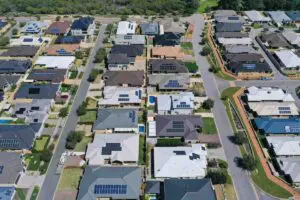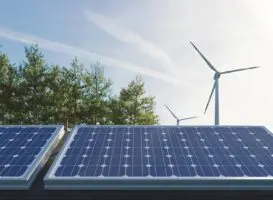The average cost of electricity has continued its upwards march for Australian households, rising by 14 per cent year-on-year in the third quarter of 2023 despite rooftop solar helping to push residential electricity usage to a new low for the same period.
The data comes from the Australian Competition and Consumer Commission’s latest report on prices, profits and margins in the supply of electricity in the national market (NEM) – a six-monthly inquiry the consumer watchdog was tasked with back in 2018.
The report finds that median residential usage in the third quarter of 2023 is the lowest of any equivalent quarter since ACCC dataset began in 2018 – as illustrated in the chart below.

The ACCC says possible factors contributing to this dip include the mild 2023 winter, high rooftop solar output, and customers deliberately reducing their usage in response to rising electricity prices.
But it seems reluctant to give too much credit to rooftop solar, naming warm weather as “likely the most significant” factor behind the plunge in demand, despite the huge jump in rooftop solar output.

“Reduced usage may also be caused by periods of high rooftop solar output, although this is also driven by weather,” the report says.
“According to the Australian Energy Market Operator, distributed solar output increased 31% and grew to a new average high of 2,287 MW in quarter 3 of 2023. This contributed to reduced average NEM operational demand, which reached a new low of 21,270 MW in quarter 3 of 2023.”
What follows is pretty confusing, and highlights the difficulty the consumer watchdog has had separating out solar self-consumption, solar exports, and reduced grid power consumption in its analysis of the overall reduction in usage.
“Unusually high solar output in that quarter can also be seen in our billing data. This is shown in Figure 3.4, which presents ‘solar feed in’ over time.

“Some solar generation is recorded as ‘solar feed in’ in our data and some is recorded as reduced usage. Periods of high solar output therefore reduce our median usage figures.
“The high solar output in quarter 3 2023 was predominantly driven by weather. However, increasing uptake of solar by households and small businesses continues to put downward pressure on usage over the long term.
“This is likely offset in part by increased electrification, such as switching from gas to electric heating and uptake of electric vehicles.
“In addition to the impacts of weather and rooftop solar output on our 2023 usage data, consumers may also have intentionally reduced their usage in response to increasing electricity prices and cost of living pressures.”
Conversely and despite the mild winter, the data reveals that hardship and payment plan customers have higher usage compared to other customer groups, which the report notes is “likely the main reason they have higher bills.”
The ACCC reasons that higher usage among these groups could be driven by them having more people per household.

But it also concedes the higher usage could reflect that these households are “less able to afford (or are otherwise restricted from accessing) more energy-efficient housing, appliances, and rooftop solar.”
Indeed.
Meanwhile, the new low in electricity usage did little to drive down bills. The data anlaysed by the ACCC finds that across all NEM states, residential customers faced effective prices that were 14% higher on average in the third quarter of 2023 compared to the third quarter of 2022.
Customers in New South Wales experienced the highest increase of 26%, followed by South Australia (14%), South East Queensland (10%) and Victoria (10%).
Small business customers experienced more stable effective prices, although results varied between states. Small business customers in New South Wales experienced an 8% increase in effective prices between the third quarter of 2022 and third quarter of 2023.
Meanwhile, small business customers experienced small effective price decreases in South Australia (2%) and South East Queensland (1%), while small business customers in Victoria experienced more significant decreases in effective prices (20%).

The report says that while wholesale power costs have decreased from the highs they hit during the global energy crisis (see chart above), network costs have increased.
“The drivers of these network cost increases include adjustments for recovery of revenue in prior years, updated capital and operating costs, and rising inflation and interest rates,” it says.
The report also notes that the rising electricity costs might have been much worse without the bill relief provided by governments and the decrease in energy usage.
“This report shows that our efforts to take the sting out of energy prices are making a meaningful difference,” Treasurer Jim Chalmers said.
“From next week, we have even more cost of living relief on the way, including more rebates for more households and small businesses.”
While the impact of wholesale conditions on prices had since eased following market intervention, network costs were increasing, the report covering NSW, Victoria, South East Queensland and South Australia found.
Prices for default offers will fall from July 1 in all of these regions except southeast Queensland for residential customers and small businesses.
The consumer watchdog said it would continue to monitor retailers’ costs, as well as the prices consumers face, to ensure the benefits of any substantial and sustained cost reductions are shared with households and small businesses.
With some reporting from Marion Rae AAP










